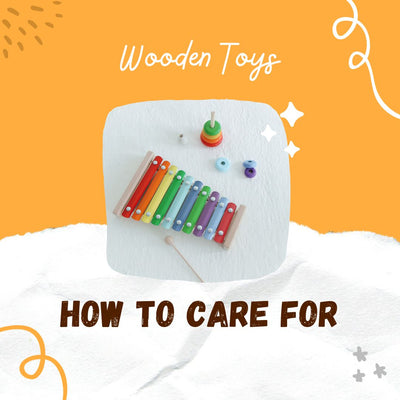In the world of pediatric therapy, sensory-based interventions play a vital role in supporting children's development and well-being. One such innovative approach is Sensory Mirror Ball Tactile Exploration Relaxation Therapy.
This therapy combines the mesmerising visual effects of a mirror ball with tactile exploration, creating a soothing and immersive experience for children. We will explore the concept of Sensory Mirror Ball Therapy, its benefits, and its applications in promoting relaxation and sensory integration in children, supported by evidence-based research.
What is Sensory Mirror Ball Tactile Exploration Relaxation Therapy? Sensory Mirror Ball Tactile Exploration Relaxation Therapy involves the use of a mirror ball to stimulate tactile exploration and provide a calming environment for children. The mirror ball's reflective properties enhance visual engagement. This therapy is designed to promote relaxation, sensory integration, and cognitive focus.
We will dive into creative ways to utilise mirror balls for children, enhancing their sensory experiences, promoting imaginative play, and fostering cognitive and motor skills development.
- Sensory Exploration: Mirror balls provide a wealth of sensory stimulation for children. Here's how you can harness their sensory benefits:
a. Visual Stimulation: Hang a mirror ball from the ceiling or place it on a secure surface. As it rotates or catches light, it produces mesmerizing reflections that engage a child's visual senses. Encourage them to observe the dancing lights, patterns, and colors, promoting visual tracking and focus.
b. Tactile Sensations: Allow children to touch the mirror ball gently. Its smooth surface and cool texture offer tactile stimulation. Consider incorporating other tactile elements, such as soft fabrics or textured objects, and encourage children to explore the differences in sensations.
- Imaginative Play and Storytelling: Mirror balls can inspire imaginative play and storytelling, nurturing creativity and language development:
a. Magical Adventures: Encourage children to imagine the mirror ball as a portal to magical realms. Prompt them to create stories and characters based on the reflections they see. Encourage verbal expression and storytelling by asking questions like, "What do you think is happening in the mirrored world?"
b. Role-Playing: Use the mirror ball as a prop for various role-playing scenarios. It can transform into a crystal ball, a treasure, or a spaceship's control panel. Encourage children to assume different roles and engage in dramatic play, stimulating their imagination and social skills.
- Motor Skills Development: Mirror balls can support the development of fine and gross motor skills in children. Try the following activities:
a. Reaching and Grasping: Hang the mirror ball at an appropriate height and encourage children to reach and grasp it. This activity promotes hand-eye coordination, balance, and upper body strength. Adjust the height to make it challenging yet achievable for different age groups.
b. Dancing and Movement: Create a dance party atmosphere by reflecting colorful lights onto the walls and floor using the mirror ball. Encourage children to dance, twirl, and move their bodies to the rhythm of the music. This activity enhances coordination, balance, and gross motor skills.
- Mindfulness and Relaxation: Mirror balls can also contribute to mindfulness and relaxation exercises for children:
a. Mindful Reflections: Sit in a calm and quiet space with the mirror ball and guide children to observe their reflections. Encourage them to notice their facial expressions, body language, and emotions. This activity fosters self-awareness and emotional regulation.
b. Relaxation Time: Dim the lights and shine a soft light onto the mirror ball. Encourage children to lie down or sit comfortably and gaze at the reflections. This soothing activity promotes relaxation, reduces anxiety, and improves focus.
Benefits of Sensory Mirror Ball Tactile Exploration Relaxation Therapy:
-
Sensory Stimulation: The combination of visual and tactile sensory inputs from the mirror ball engages multiple sensory systems simultaneously. This sensory stimulation can help children develop better body awareness, sensory processing skills, and sensory integration capabilities.
-
Relaxation and Stress Reduction: The soothing and mesmerising effects of the mirror ball can induce a state of relaxation, reducing stress and anxiety in children. This therapy creates a safe and calming environment, fostering emotional regulation and promoting a sense of well-being.
-
Tactile Exploration: The smooth and reflecting surface of the mirror ball encourage tactile exploration. Children can touch, feel, and explore stimulating their sense of touch and promoting fine motor skills development.
-
Focus and Concentration: The captivating visual display created by the mirror ball can help improve focus and concentration in children. The multi-sensory experience provided by the therapy enhances attention span, making it beneficial for children with attention-deficit/hyperactivity disorder (ADHD) or other attention-related difficulties.
Applications of Sensory Mirror Ball Tactile Exploration Relaxation Therapy:
-
Autism Spectrum Disorder: Sensory Mirror Ball Therapy can be particularly beneficial for children with Autism Spectrum Disorder (ASD). The sensory stimulation and calming effects can help reduce sensory overload, promote self-regulation, and improve social interaction and communication skills.
-
Sensory Processing Disorders: Children with sensory processing disorders often struggle with processing and integrating sensory information. Sensory Mirror Ball Therapy can assist in desensitisation, sensory modulation, and improving sensory integration, enabling children to better navigate their surroundings.
-
Anxiety and Stress Management: The relaxing nature of Sensory Mirror Ball Therapy makes it effective in reducing anxiety and stress in children. This therapy can be implemented in clinical settings, schools, or home environments to create a calming space for children to unwind and destress.
References:
- Bundy A, et al. (2002). Sensory Integration: Theory and Practice. F.A. Davis Company.
- Dunn W. (2001). The sensations of everyday life: Empirical, theoretical, and pragmatic considerations. The American Journal of Occupational Therapy, 55(6), 608-620.
- Hockenberry MJ, Wilson D. (2015). Wong's Essentials of Pediatric Nursing. Elsevier Health Sciences.
- Parham LD, et al. (2007). Effects of sensory integration intervention on self-stimulating and self-injurious behaviors. The American Journal of Occupational Therapy, 61(4), 447-453.
- Schaaf RC, et al. (2014). Pathways to participation for children with autism





